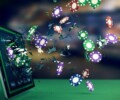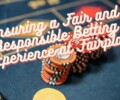5 Biggest Dota 2 Myths Debunked

Over the decade, Dota 2 has garnered millions of fans across the globe. Yet, despite the countless matches played, there are still plenty of myths surrounding the game. Here’s counting down to our top 5 myths debunked.
The more (gold & kills), the merrier.
Generally in MOBA genres, the fundamental objective is to destroy the opponent’s throne, such as the Ancients in Dota 2 or the Nexus in League of Legends. Thus, it’s a no-brainer to consistently secure kills and gold in the match. However, more often than not, mere stats do not translate to indisputable victory.
Occasionally, we do witness unexpected turnarounds by the losing team, gaining their momentum back and eventually winning the game against overwhelming odds. In layman’s terms, such scenarios are called comebacks. When a comeback occurs in a match, Esports predictions may be tipped off the scale, which makes Esports betting such a lucrative sport.
Fans recall the memorable moment during the International 2013 when Alliance was unable to fight head-on against LGD. Therefore, Alliance resorted for a base race to destroy the throne instead of taking a team fight.
“Kills mean nothing, throne means everything” from the International 2013, Alliance vs LGD.
Although such scenarios are much rarer in LoL, Dota 2 matches tend to have a much more volatile chain reaction when it comes to expecting a comeback. Nevertheless, it’s the adrenaline rush from such plays that gets viewers head over heels every time.
“Playing video games is an easy job.”
Speaking of the pro scene, perhaps the most unjustified misconception among the mundane is that playing video games is a dream job. Some even go as far to comment that “pro players had it easy in life” just because of the tremendous prize pools that players compete for.
Unfortunately, the harsh reality of the Esports industry, in particular Dota 2, is that the generous prize pools are only reserved for the selected world’s best teams. Whereas, for many amateurs or rising stars, a consistent salary may be too much to ask if they aren’t playing under an Esports powerhouse.
Even for prominent pro players in the tier-1 scene, it’s a gruesome 11 hours of practice every day to hone their skills to perfection. Team Secret player, Lasse Aukusti “MATUMBAMAN” Urpalainen, once tweeted that 11 hours of practice is a regular routine for most teams competing at the International 2018. Just like most careers everywhere, it takes hard work and perseverance to remain at the top, so Esports is no exception.
Supports pick first.
It has become a norm among Dota 2 players that “supports always pick first”. Of course, with a reasonable benefit in mind, which is to avoid having your carry hero countered by the opponents’ lineup. By having the last pick, many carry players believe that they gain certain advantage over the enemy team.
While this is viable in casual and even ranked games, especially for “cheese” picks such as Broodmother and Meepo, it’s not always the case in pro games. For instance, Clement “Puppey” Ivanov from Team Secret, is renowned for his unorthodox drafting.
On top of picking unusual heroes, Puppey loves to spice things up by first-picking carry heroes occasionally. With just a switch in the sequence of picks, he fools his opponents into overthinking the drafts and potentially digging their own graves in advance.
As Sun Tzu once wrote in the Art of War; “Every battle is won before it’s ever fought”.
Chat Wheel and Tipping culture.
Ever since chat wheels and tipping were introduced into Dota 2, the features have ultimately caused controversy in the Dota 2 community, “is it bad manners to tip your opponent?”
For starters, in professional Dota 2, tipping and spamming the chat wheel may come across as bad manners or lack of sportsmanship. Several teams would even mute the opposing players before the game begins, just to avoid the distraction.
On the other hand, notorious teams such as Virtus.pro and team OG utilize it as an arsenal of mental warfare against the opposing team. In this clip, Johan “N0tail” Sundstein told his teammates, “if you want mental damage, tip RAMZES666 (the enemy)”. And sure enough, RAMZES666 was tilted enough to sarcastically praise them in all-chat.
For better or worse, the features are here to stay, as a paid perk obtainable from the Battle Pass 2020. So, no it isn’t a taboo, but if you can’t stand it, the mute button exists for such reasons.
The Man, The Myth, The Legend.
Besides Gabe Newell being the public figure of Dota 2 and Valve, Icefrog is just as much of a Dota 2 celebrity too. The man who formerly developed the original Dota 1 custom game, became the Dota 2 developer, working for Valve, behind-the-scenes.
Frankly, that’s really the only known fact that the Dota 2 community knows. To this day, Icefrog’s identity and whereabouts remain shrouded in mystery. Except for several notable pro players who have met him during the Internationals event, the vast majority of fans will never know who Icefrog is.
Although there have been speculations to his public identity, unfortunately, most of them are just baseless rumors. For example, hailing from India is a personality who goes by the name, Wykrhm Reddy. Due to his absurdly swift Dota 2 updates, many believed that he just might be Icefrog.
In an interview by AFK Gaming, when asked whether if he is Icefrog, Mr Wykrhm simply responded, “What is Ice, May Always Leap”. Regrettably, Icefrog’s identity would be the most elusive myth that we cannot debunk today (and probably never will).
Nonetheless, we did debunk several misconceptions that have been lingering for ages. Last but not least, here’s another myth debunked from yours truly, “League of Legends originated from Dota”.
5 Biggest Dota 2 Myths Debunked,




No Comments